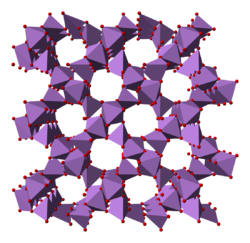 | |
| Names | |
|---|---|
| Other names Arsenic(V) oxide Neutral arsenic oxide (2:5) Arsenic anhydride | |
| Identifiers | |
3D model (JSmol) | |
| ChemSpider | |
| ECHA InfoCard | 100.013.743 |
| EC Number |
|
PubChem CID | |
| RTECS number |
|
| UNII | |
| UN number | 1559 |
CompTox Dashboard (EPA) | |
| |
| |
| Properties | |
| As2O5 | |
| Molar mass | 229.8402 g/mol |
| Appearance | white hygroscopic powder |
| Density | 4.32 g/cm3 |
| Melting point | 315 °C (599 °F; 588 K) (decomposes) |
| 59.5 g/100 mL (0 °C) 65.8 g/100 mL (20 °C) 8.20 g/100 mL (100 °C) | |
| Solubility | soluble in alcohol |
| Acidity (pKa) | 7 |
| Hazards | |
| GHS labelling: | |
   | |
| Danger | |
| H301, H331, H350, H410 | |
| P201, P202, P261, P264, P270, P271, P273, P281, P301+P310, P304+P340, P308+P313, P311, P321, P330, P391, P403+P233, P405, P501 | |
| NFPA 704 (fire diamond) | |
| Lethal dose or concentration (LD, LC): | |
LD50 (median dose) | 8 mg/kg (rat, oral) |
| NIOSH (US health exposure limits): | |
PEL (Permissible) | [1910.1018] TWA 0.010 mg/m3 [1] |
REL (Recommended) | Ca C 0.002 mg/m3 [15-minute] [1] |
IDLH (Immediate danger) | Ca [5 mg/m3 (as As)] [1] |
| Related compounds | |
Other cations | Phosphorus pentoxide Antimony pentoxide |
Related compounds | Arsenic trioxide Arsenic acid |
Except where otherwise noted, data are given for materials in their standard state (at 25 °C [77 °F], 100 kPa). | |
Arsenic pentoxide is the inorganic compound with the formula As2O5. [2] This glassy, white, deliquescent solid is relatively unstable, consistent with the rarity of the As(V) oxidation state. More common, and far more important commercially, is arsenic(III) oxide (As2O3). All inorganic arsenic compounds are highly toxic and thus find only limited commercial applications.



